Clean Bulk Meal Plan Secrets: Why Your Body Clock Determines Muscle Growth More Than Macros

I used to think bulking was just about eating more food. Turns out, I was completely wrong. After years of spinning my wheels and gaining more fat than muscle, I discovered that when you eat matters just as much as what you eat. Research shows that lean bulking focuses on a balanced diet that supports muscle growth while keeping fat gain to a minimum, optimizing your body composition by prioritizing muscle gain over fat gain through strategic nutrient timing.
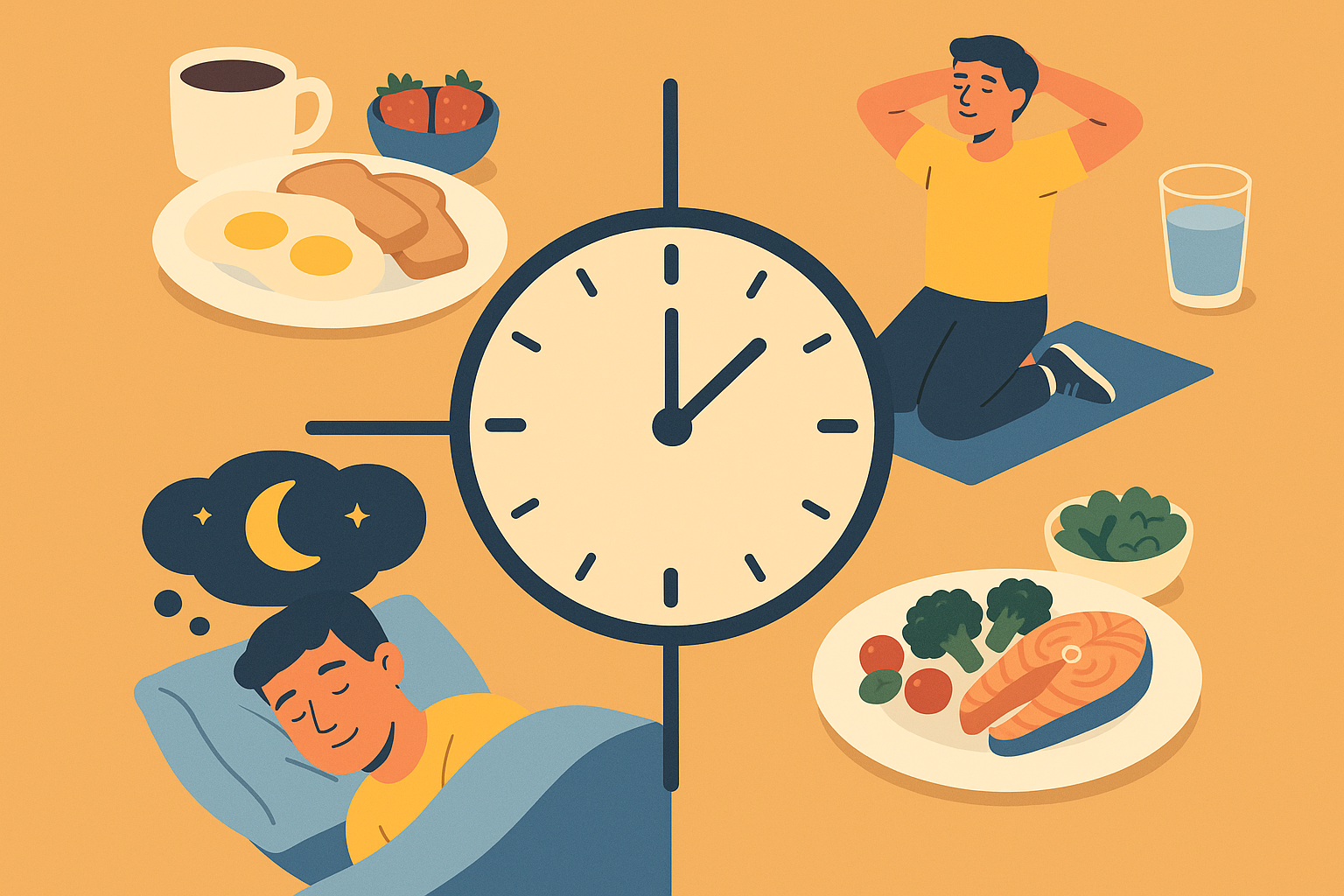
Table of Contents
- Why Traditional Bulking Fails Your Natural Rhythms
- The Hidden Science of Timing Your Nutrients
- How Your Gut Bacteria Controls Muscle Building
- The Stress-Muscle Connection Nobody Talks About
- Making Your Food Actually Work for You
- Building the Perfect Clean Bulk Food Strategy
- When to Eat for Maximum Muscle Growth
- How Organic Authority Can Transform Your Results
- Final Thoughts
TL;DR
- Your body handles the exact same meal differently depending on when you eat it
- The bacteria in your gut are basically your training partners – treat them right
- When life gets crazy, your body literally can’t build muscle the same way
- Some food combinations can boost nutrient absorption by 300-500%
- There are specific windows throughout the day when your body is primed for muscle growth
- Quality matters more than quantity when you’re putting in this much effort
- Your nutrition needs change with the seasons – yes, really
Why Traditional Bulking Fails Your Natural Rhythms
Most clean bulk approaches completely ignore something crucial: your body has an internal clock that decides whether food builds muscle or gets stored as fat. Here’s something that blew my mind when I first learned it – your body handles the exact same meal differently depending on when you eat it. That protein shake at 7 AM hits different than the same shake at 7 PM, literally.
I used to wonder why some days I’d feel like a beast in the gym while other days I’d feel sluggish, even when eating identical meals. The answer lies in how our internal clocks control everything from insulin sensitivity to how well we build muscle protein. Your bulking diet needs to work with these natural rhythms instead of fighting against them.
Your Body’s Hidden Nutrient Schedule
Look, I’m not trying to turn you into a nutrition scientist here. But understanding this basic concept can save you months of frustration. Your body’s ability to use nutrients for muscle growth changes dramatically throughout the day based on your natural biology. I learned that timing becomes just as critical as what you’re eating, and most lean bulk meal plans completely miss this.
The research on this is fascinating, but here’s the simple version: your body produces different amounts of insulin at various times throughout the day, even when you’re not eating. This means identical meals can have completely different effects on whether you build muscle or store fat. I’ve seen people struggle with their lean bulk progress simply because they were eating the right foods at the wrong times.
The Pre-Dawn Protein Advantage
Try this weird trick that actually works: set your phone alarm 30 minutes earlier, drink a protein shake, then go back to sleep. I know it sounds crazy, but consuming 15-20g of easily digestible protein before you normally wake up can jumpstart muscle building before your stress hormones kick in. This simple timing adjustment primes your body for better nutrient use throughout the entire day.
Sarah, a competitive powerlifter I know, started doing this and saw real changes within three weeks. Better energy during morning workouts, faster recovery between training sessions, and she gained 2.5 pounds with minimal fat gain during her 8-week lean bulking phase.
I get it – waking up even earlier just to drink a protein shake sounds insane. But your growth hormone levels are naturally high during those final hours of sleep, and giving your body amino acids during this window can extend that muscle-building state into your waking hours.
Finding Your Carb Sweet Spots
Here’s another game-changer: your body has two specific times each day when it’s primed to handle carbs really well – 2-3 hours after waking and 4-6 hours before your natural bedtime. I’ve found that timing my carb intake during these windows maximizes muscle fuel storage while minimizing fat gain.
This discovery completely changed how I structure my bulking diet plan. Instead of spreading carbs evenly throughout the day like I used to, I now concentrate them during these high-sensitivity periods. The difference in how I feel and perform is remarkable.
How Seasons Change Your Nutritional Needs
This might sound weird, but your body’s nutritional needs actually shift with the seasons. Last winter, I was following the same meal plan that worked great in summer, but I felt sluggish and my lifts were stalling. I was getting frustrated until I realized my body literally needed different things in December than it did in July.
Your thyroid function, hunger hormones, and even your mood all respond to seasonal changes in daylight and temperature. I used to get frustrated when my lean bulk would stall during certain months, not realizing that my body’s needs had shifted with the seasons.
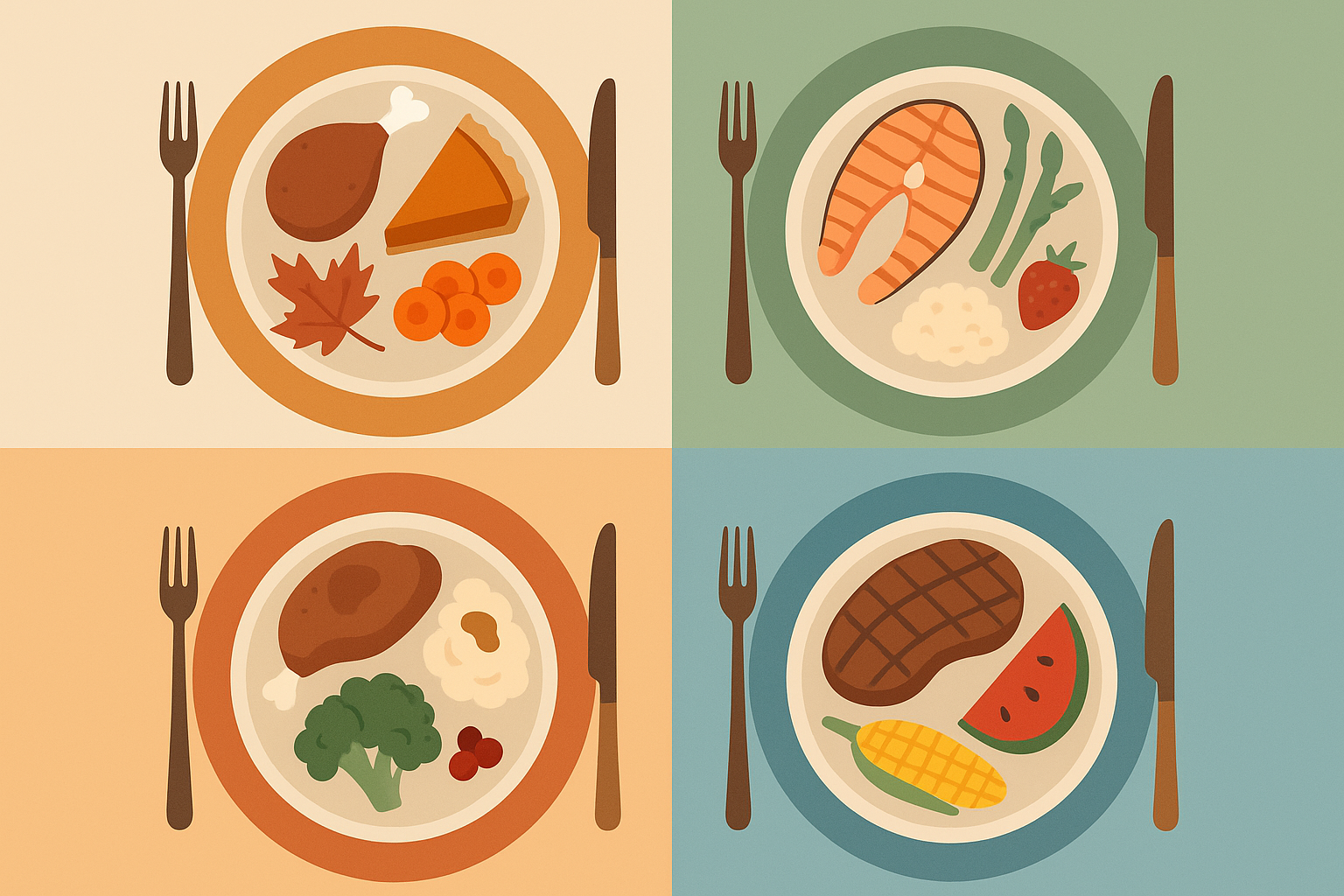
Winter Bulk Modifications That Actually Work
When the days get shorter, your body triggers some ancient survival mechanisms. Reduced daylight increases hunger and alters how your thyroid works. During winter months, I need to increase my caloric intake by 10-15% and boost healthy fat ratios to compensate for these metabolic changes that most people never consider.
The lean bulk approach that worked perfectly in summer suddenly feels insufficient when December rolls around. Your body is literally preparing for scarcity, even though we live in an age of abundance. I’ve learned to work with these ancient survival mechanisms rather than fighting against them.
During winter, I also notice that my recovery takes longer and my motivation dips if I don’t adjust my nutrition accordingly. The extra calories aren’t just about building muscle – they’re about maintaining optimal brain function and mood during the darker months.
Spring Transition Strategies
As daylight increases in spring, your body naturally shifts toward improved insulin sensitivity. This creates perfect opportunities for strategic carbohydrate cycling without worrying about fat accumulation, making it an ideal time to push training intensity.
Spring is honestly my favorite time for lean bulking. Everything just works better – recovery is faster, energy is higher, and my body seems to use nutrients more efficiently. I can get away with higher carb intakes and more aggressive training volumes during this season.
Summer Optimization Techniques
Extended daylight and heat stress create unique metabolic advantages during summer months. I’ve found that post-workout nutrition windows extend up to 4 hours due to elevated metabolic activity, allowing for more flexible meal timing without sacrificing results.
The heat actually works in your favor during lean bulking phases. Your metabolic rate increases to maintain body temperature, and your body becomes more efficient at using nutrients for energy rather than storage. I can eat larger meals later in the day during summer without the same fat gain concerns I’d have in winter.
The Micronutrient Timing Game
Here’s something most clean bulk plans completely ignore: specific vitamins and minerals have optimal absorption windows. Even with adequate intake, poor timing can create deficiencies that sabotage muscle building progress and overall health outcomes.
Understanding proper mineral timing becomes crucial when selecting daily supplements that support muscle building goals and overall health optimization. I used to take all my supplements at once with breakfast, thinking I was being efficient. Turns out, I was creating expensive urine and missing out on most of the benefits.
Morning Mineral Strategy
Here’s how I space out my supplements now – and trust me, it makes a difference. Zinc, magnesium, and iron all compete for the same absorption pathways in your digestive system. I take zinc first thing in the morning on an empty stomach. A couple hours later, I’ll have my magnesium with breakfast. Iron goes with lunch if I’m taking it. And calcium? That’s an evening thing with dinner.
Sounds like a pain, but once you get into the routine, it’s automatic. The competition between minerals is real and significant. When I started spacing out my supplements properly, I noticed improvements in energy levels, sleep quality, and recovery within just a few weeks. My lean bulk progress accelerated because my body could actually use the nutrients I was providing.
Here’s my daily mineral schedule:
| Mineral | Optimal Timing | Absorption Window | Competing Nutrients |
|---|---|---|---|
| Zinc | 1 hour before breakfast | 30-45 minutes | Iron, Calcium |
| Magnesium | 2 hours after zinc | 45-60 minutes | Calcium, Phosphorus |
| Iron | 3 hours after magnesium | 60-90 minutes | Zinc, Calcium |
| Calcium | Evening with dinner | 2-3 hours | All minerals |
I set reminders on my phone for the first few weeks until it became habit. The improvement in how I feel and perform during my lean bulk phases makes the extra effort completely worthwhile.
The Hidden Science of Timing Your Nutrients
This gut bacteria stuff used to sound like hippie nonsense to me. But then I started paying attention to how I felt after meals, and it clicked. When my digestion was off, everything else suffered – my energy, my workouts, even my mood. Turns out, the bacteria in your gut are basically your training partners. Treat them right, and they’ll help you build muscle.
Your intestinal microbiome directly controls muscle protein synthesis, nutrient partitioning, and inflammation levels through biochemical pathways that science is just beginning to understand. I’ve realized that gut health matters just as much as protein intake for successful clean bulking, making digestive optimization a crucial component of any serious muscle-building plan.
The connection between gut bacteria and muscle growth blew my mind when I first learned about it. We’re talking about trillions of microorganisms that essentially decide whether your lean bulk succeeds or fails. These bacteria produce compounds that directly influence your ability to build muscle, recover from training, and maintain optimal body composition.
I used to focus solely on hitting my macros and timing my meals around workouts. Now I realize that without a healthy gut microbiome, even the perfect bulking meal plan won’t deliver optimal results.
How Gut Bacteria Build Your Muscles
Specific bacterial strains in your gut produce metabolites that either enhance or inhibit muscle growth. The composition of your microbiome determines how effectively your body can utilize the nutrients you’re consuming, making gut health optimization essential for maximizing clean bulk results.
Research shows that probiotics support more than just skin health – they directly influence muscle protein synthesis and recovery processes. I started paying attention to my gut health about two years ago, and the difference in my training and recovery has been remarkable.
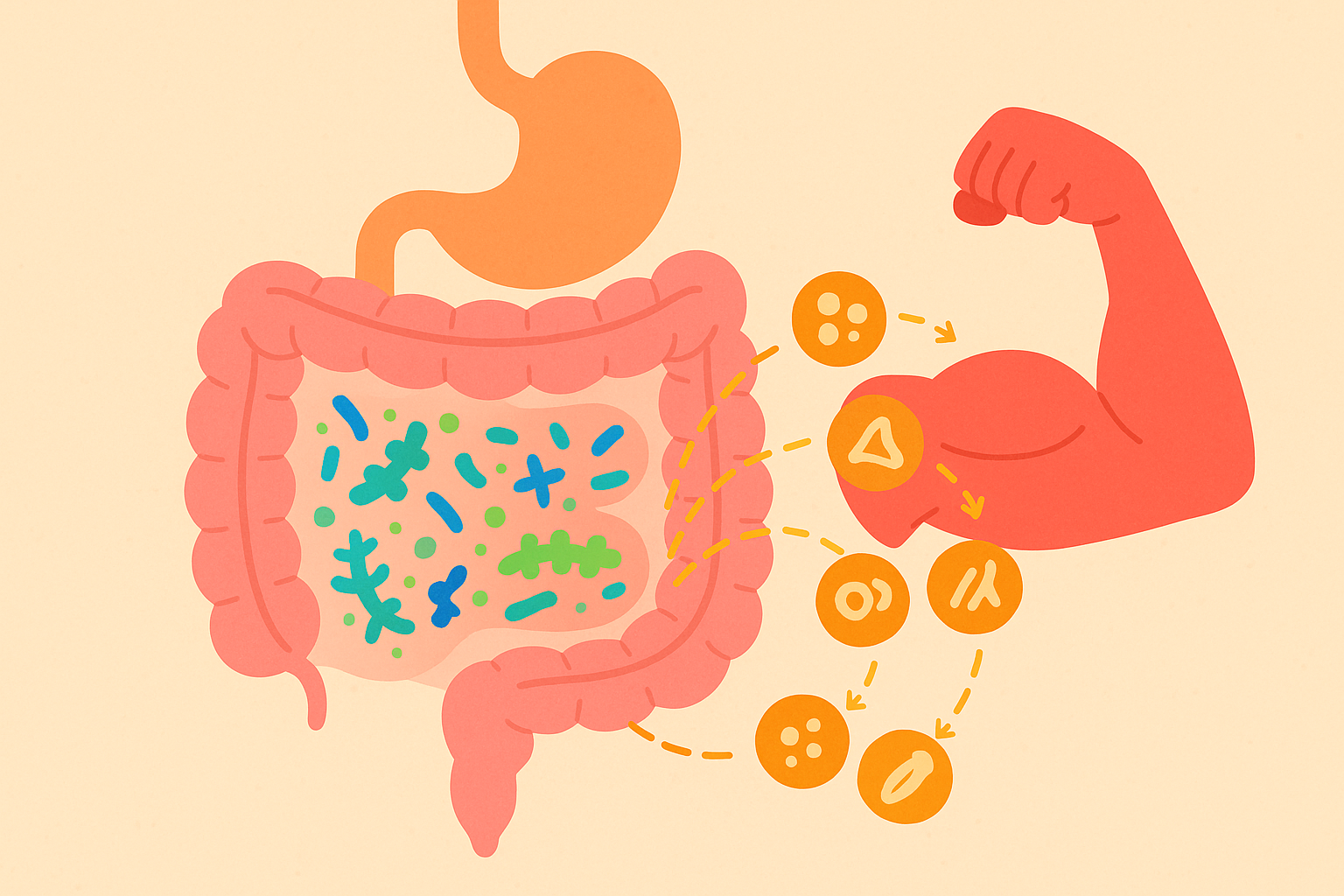
The most fascinating part is how certain bacteria can actually increase the bioavailability of amino acids from your protein sources. Some strains break down proteins more efficiently, while others produce short-chain fatty acids that enhance nutrient absorption in your intestines.
Choosing the Right Probiotic Strains
Lactobacillus plantarum and Bifidobacterium longum specifically enhance amino acid absorption and reduce exercise-induced inflammation. I take these strains 60-90 minutes before training to optimize nutrient utilization and recovery from intense workouts.
Finding the right probiotic strains for lean bulk goals took some experimentation. Many general probiotics focus on digestive comfort rather than performance enhancement. I had to dig into the research to find strains that specifically support muscle building and recovery.
The timing matters too. Taking probiotics right before training ensures that the beneficial bacteria are active in your system when you need them most – during the post-workout recovery period when muscle protein synthesis is elevated.
Managing Your Digestive Energy Budget
Here’s something most people never think about: digestion actually burns a lot of calories. The energetic cost of digestion can consume 15-20% of your daily calories during aggressive bulking phases. I’ve learned to strategically compose meals to minimize this metabolic tax while maximizing nutrient absorption and utilization for muscle building.
This concept completely changed how I approach my bulking meal plan. Every calorie spent on digestion is a calorie that’s not available for muscle building or training performance. By optimizing my digestive efficiency, I can get more results from the same caloric intake.
The key is understanding which foods require more energy to process and which combinations work together to reduce the overall digestive burden. Some foods actually help you digest other foods more efficiently, creating a net positive effect on your energy balance.
Enzyme Optimization for Better Absorption
Supplementing with specific digestive enzymes 20 minutes before high-protein meals can increase amino acid bioavailability by up to 35%. This strategy reduces digestive stress while ensuring your body can actually use the protein you’re consuming for muscle synthesis.
I was skeptical about digestive enzymes at first, thinking they were just another supplement company gimmick. But the research is solid, and my personal experience has been overwhelmingly positive. My lean bulk progress accelerated noticeably when I started using enzymes strategically.
The improvement in how I feel after large meals is dramatic. No more food comas or digestive discomfort, even when consuming the higher calorie loads necessary for effective bulking. My energy stays stable throughout the day, which translates to better training sessions.
Strategic Fiber Timing
Placing high-fiber foods 3-4 hours before training maximizes short-chain fatty acid production for sustained energy. This timing prevents digestive interference during workouts while providing metabolic benefits that support training performance and recovery.
Fiber timing is something most people never consider, but it can make or break your training sessions. Too much fiber too close to training can cause digestive distress and reduce performance. But consumed at the right time, fiber becomes a powerful tool for sustained energy and gut health optimization.
I’ve found that
I’ve found that consuming my highest-fiber meals during lean bulking phases in the mid-afternoon works perfectly. This gives my body time to process the fiber and produce beneficial metabolites before my evening training sessions, while still providing sustained energy throughout the day.
The Stress-Muscle Connection Nobody Talks About
Let me be real with you about stress. I used to think I could just power through anything – work deadlines, relationship drama, financial pressure – and still make gains in the gym. Wrong. When life gets crazy, your body literally can’t build muscle the same way, no matter how perfect your meal prep is. I learned to work with my stress levels instead of pretending they don’t exist.
Your nervous system and hormonal responses create complex feedback mechanisms that determine whether consumed calories build muscle or get stored as fat, regardless of macronutrient ratios. I’ve discovered that psychological and physical stress can completely override even the most perfectly planned clean bulk meal strategy through cortisol-mediated pathways.
This realization was a game-changer for me. I used to get frustrated when my bulking diet would work perfectly for weeks, then suddenly stop delivering results. I’d blame my meal plan or training program, not realizing that stress was sabotaging my progress behind the scenes.
Professional bodybuilder “Sam Sulek shares his bulking approach, emphasizing that building muscles is a process that relies heavily on carbs for intramuscular glycogen storage” according to Muscle & Fitness, highlighting how stress management and proper carbohydrate timing work together for optimal muscle growth. Even elite athletes have to account for stress in their nutrition planning.
Adapting Your Nutrition to Stress Levels
Real-time dietary adjustments based on stress levels can dramatically improve nutrient partitioning and muscle building results. I’ve learned to modify my macronutrient ratios based on daily stress levels rather than following a rigid meal plan that ignores my body’s changing needs.
This approach requires more attention and flexibility than following a static lean bulk plan, but the results are worth it. On high-stress days, I reduce my carbohydrate intake and increase healthy fats to support cortisol management. On low-stress days, I can push carbs higher to maximize muscle glycogen storage.
The key is having reliable ways to assess your stress levels objectively. Subjective feelings can be misleading, especially when you’re dealing with chronic stress that becomes your new normal. I use a combination of heart rate variability, sleep quality metrics, and simple mood tracking to guide my bulking meal plan adjustments.
Using Heart Rate Variability for Meal Planning
Heart rate variability measurements can predict optimal macronutrient ratios for each day. Higher carbohydrate intake works best during high HRV periods, while increased protein and fat ratios support recovery during low HRV phases when stress levels are elevated.
HRV tracking has revolutionized how I approach lean bulking. Instead of guessing whether my body is ready for aggressive nutrition, I have objective data to guide my decisions. This takes the guesswork out of meal planning and ensures I’m always working with my physiology rather than against it.
On days when my HRV is low, indicating high stress or poor recovery, I automatically shift to a more conservative approach. More protein for muscle preservation, more healthy fats for hormone support, and fewer carbs to avoid additional metabolic stress. This flexibility has dramatically improved my consistency and results.
Cortisol Management Through Nutrition
Consuming adaptogenic compounds like ashwagandha or rhodiola 45 minutes before high-stress periods can prevent stress-induced muscle protein breakdown. This proactive approach helps maintain positive nitrogen balance even during challenging life circumstances.
Strategic use of adaptogenic compounds and functional foods can help maintain hormonal balance during intense training phases. I’ve found that timing these compounds around predictable stressors makes a huge difference in how my body responds to both training and nutrition.
The goal isn’t to eliminate stress completely – that’s impossible and probably not even desirable. Instead, I focus on supporting my body’s ability to handle stress efficiently while maintaining the anabolic environment necessary for successful lean bulk phases.
How Brain Chemistry Affects Your Bulk
Your brain chemistry directly influences appetite regulation, nutrient cravings, and metabolic rate through neurotransmitter-hormone cascades. Understanding these connections allows me to work with my natural brain chemistry rather than fighting against it during extended bulking phases.
The neurotransmitter systems in your brain essentially control whether you feel motivated to train, satisfied after meals, and energized throughout the day. When these systems are optimized, lean bulking becomes much easier because your body naturally craves the foods and behaviors that support muscle growth.

I used to struggle with consistency during longer bulking phases, especially when life got stressful. Now I understand that my brain chemistry was working against me, and I’ve learned to use nutrition to optimize these pathways for better adherence and results.
Boosting Motivation Through Food Choices
Strategic inclusion of naturally occurring tyrosine-rich foods like aged cheeses and fermented soybeans can enhance motivation and meal plan compliance. These foods support dopamine synthesis, making it easier to stick with challenging nutrition protocols long-term.
Dopamine isn’t just about pleasure – it’s your brain’s reward and motivation system. When dopamine levels are optimized, you actually want to make the choices that support your lean bulk goals. The foods become more appealing, and the discipline required feels less burdensome.
I noticed this effect most clearly when I started incorporating more tyrosine-rich foods into my morning routine. My motivation for training and meal prep increased significantly, and I found myself looking forward to my structured eating schedule rather than viewing it as a chore.
Optimizing Recovery Through Serotonin
Tryptophan-containing foods consumed with specific carbohydrate ratios 2-3 hours before bed enhance sleep quality and overnight muscle recovery. This serotonin pathway optimization improves both rest quality and next-day training performance.
Sleep is when the magic happens for muscle building, and serotonin is the key neurotransmitter that regulates sleep quality. By strategically timing tryptophan intake with carbohydrates, I can enhance serotonin production and improve the depth and quality of my recovery sleep.
The carbohydrate component is crucial because it helps transport tryptophan across the blood-brain barrier more effectively. This combination has dramatically improved my sleep quality during lean bulking phases, when higher food volumes can sometimes interfere with rest.
Making Your Food Actually Work for You
You know how some foods just seem to work better together? There’s actually science behind that. The actual utilization of nutrients from your clean bulk meals depends on complex absorption enhancers and inhibitors that create dramatic differences in real-world results. I’ve learned that bioavailability matters more than total nutrient content, with certain food pairings increasing absorption by 300-500% through complementary pathways.
This revelation completely shifted my approach to meal planning. I used to focus exclusively on hitting my macro targets, assuming that if I consumed enough protein, carbs, and fats, my body would automatically use them efficiently. The reality is far more complex and interesting.
Your bulking meal plan can look perfect on paper but deliver mediocre results if you’re not considering how different nutrients interact with each other during digestion and absorption. Some combinations create synergistic effects that multiply the benefits, while others can actually block absorption and waste your efforts.
Powerful Food Combinations for Maximum Absorption
Like eating an orange with your iron supplement isn’t just tasty – the vitamin C actually helps you absorb more iron. Or how a little fat with your vegetables helps you get more vitamins. I started thinking about my meals like puzzle pieces that fit together.
Certain nutrient pairings can dramatically increase bioavailability through synergistic absorption pathways and enzymatic enhancement. Understanding these combinations transforms ordinary meals into highly efficient muscle-building tools that deliver superior results from the same ingredients.
The science behind nutrient synergy is fascinating. Your digestive system has evolved to process whole foods that naturally contain complementary compounds. When you understand these relationships, you can design meals that work with your biology to maximize every nutrient you consume during your lean bulk.
I’ve experimented extensively with different food combinations, and the difference in how I feel and perform is remarkable. The same total nutrients delivered through optimized combinations provide noticeably better energy, recovery, and muscle-building results.
Optimizing Fat-Soluble Vitamins
Vitamins A, D, E, and K require specific fatty acid profiles for optimal absorption. I’ve found that medium-chain triglycerides provide superior bioavailability compared to long-chain fats, making coconut oil and MCT oil valuable additions to vitamin-rich meals.
Fat-soluble vitamins are crucial for hormone production, immune function, and recovery – all essential components of successful lean bulk phases. But simply consuming these vitamins isn’t enough; they need the right type of fats present for absorption.
MCT oil has become a staple in my supplement routine because it enhances the absorption of fat-soluble vitamins while providing quick energy that doesn’t interfere with fat burning. I add it to my morning coffee along with vitamin D for optimal absorption.
Mineral Absorption Strategies
Combining minerals with specific amino acids or organic acids dramatically improves absorption rates. Glycine-bound minerals show 40-60% better uptake than inorganic forms, making chelated supplements worth the extra investment for serious muscle building.
The difference between chelated and non-chelated minerals is huge, especially during lean bulking when your mineral needs are elevated due to increased training volume and metabolic demands. I learned this the hard way after months of taking cheap mineral supplements with minimal results.
Chelated minerals are bound to amino acids, which allows them to bypass the competitive absorption pathways that limit uptake of inorganic forms. This means you can take smaller doses and get better results, which is more cost-effective in the long run.
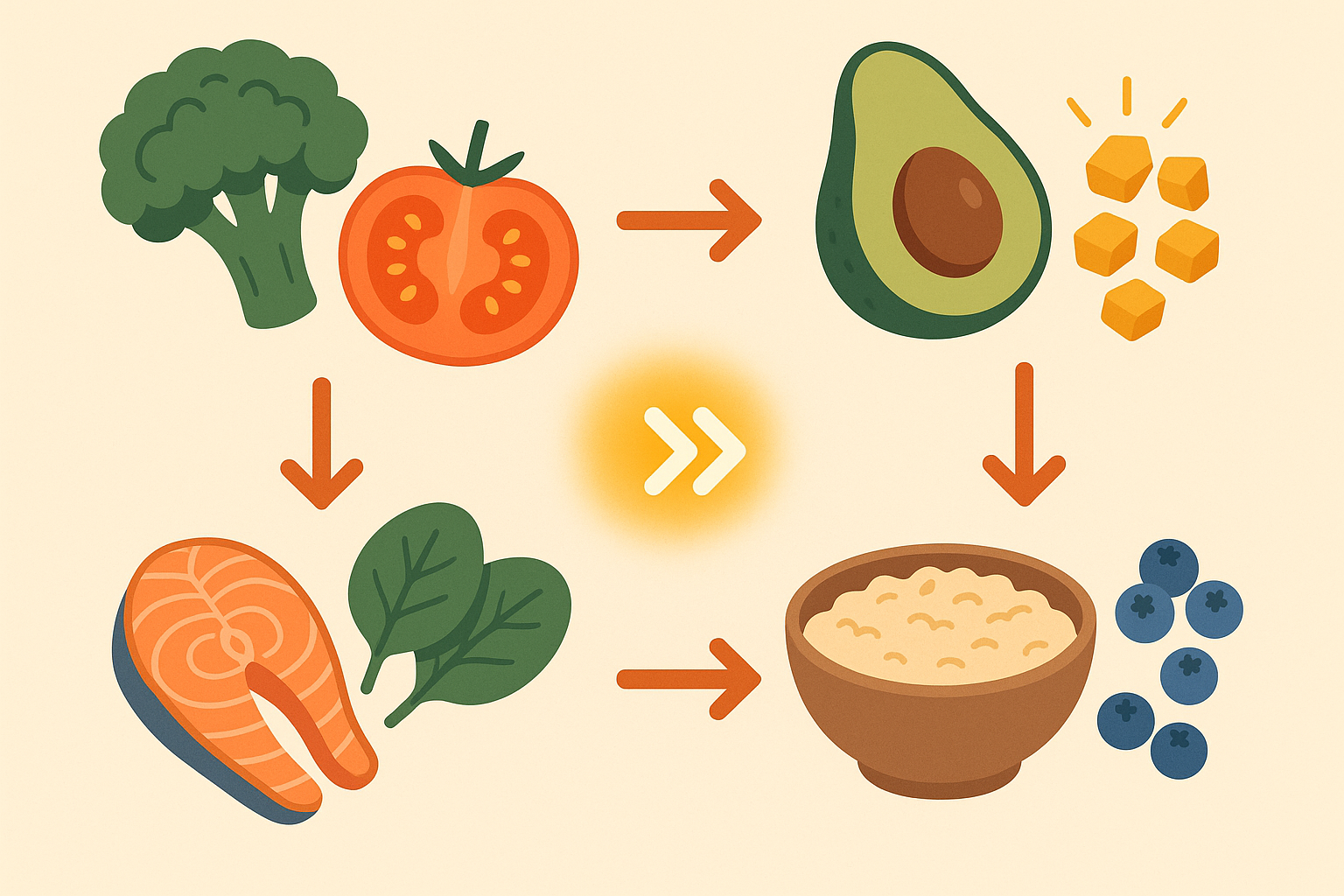
Neutralizing Foods That Block Nutrients
Many “healthy” foods contain compounds that actively block nutrient absorption, requiring specific preparation methods or timing strategies to maximize nutritional value. I’ve learned to identify and neutralize these anti-nutrients to get the most from my clean bulk meal plan.
Learning to properly prepare foods is essential, just like understanding simple ways to improve digestion for better nutrient utilization. Anti-nutrients aren’t necessarily bad – they serve protective functions in plants – but they can interfere with your muscle-building goals if not addressed properly.
The most common anti-nutrients include phytates, oxalates, and lectins. These compounds can bind to minerals and proteins, making them unavailable for absorption. Simple preparation techniques can dramatically reduce their impact while preserving the beneficial nutrients in these foods.
Reducing Phytates for Better Mineral Absorption
Soaking, sprouting, or fermenting grains and legumes for 12-24 hours can reduce phytate content by up to 90%. This simple preparation step dramatically improves mineral bioavailability from plant-based proteins, making them much more effective for muscle building.
Mark discovered that his quinoa and lentil meals weren’t providing the mineral support he expected for his training. After implementing a 24-hour soaking protocol followed by sprouting, his post-workout recovery improved significantly. Blood tests showed his iron and zinc levels increased by 40% within six weeks, despite consuming the same total amounts of these minerals.
I now prepare all my grains and legumes using this method during lean bulk phases. It requires some planning ahead, but the improvement in mineral status and overall energy levels makes it worthwhile. Plus, the sprouting process actually increases the protein content and makes these foods easier to digest.
Building the Perfect Clean Bulk Food Strategy
I used to get overwhelmed by all the food choices out there. So I created a simple system: there are foods that are absolute game-changers for building muscle, foods that are solid supporting players, and foods that are just there for volume and health. Once I started thinking this way, grocery shopping became way easier.
Traditional bulking approaches focus on calorie density without considering the metabolic cost of processing different food types, leading to suboptimal body composition changes. I’ve developed a strategic food selection system that prioritizes nutrient density and anabolic signaling over simple caloric content.
The clean bulk meal plan I use now bears little resemblance to the “eat everything in sight” approach I used to follow. Every food choice serves a specific purpose in supporting muscle growth, recovery, or overall health. This targeted approach delivers better results with fewer total calories and less fat gain.
Bulking foods aren’t just about hitting calorie targets anymore. Each food needs to earn its place in my meal plan by providing superior nutrient density, optimal amino acid profiles, or specific compounds that enhance training performance and recovery.
The Clean Bulk Food Hierarchy System
Not all “clean” foods provide equal muscle-building benefits, with specific foods offering superior nutrient density and anabolic signaling compared to their caloric peers. I rank foods based on their ability to support muscle growth, not just their macronutrient profile.
This hierarchy system helps me make quick decisions when planning meals or shopping for groceries. Instead of getting overwhelmed by endless food options, I can focus on the foods that deliver the biggest impact for my clean bulk goals.
The ranking considers factors like amino acid completeness, micronutrient density, bioavailability, and specific compounds that enhance muscle protein synthesis or recovery. Bulking food choices become much clearer when you have objective criteria for evaluation.
Tier 1: The Muscle-Building Powerhouses
Foods like grass-fed beef, wild-caught salmon, and organic eggs provide complete amino acid profiles with naturally occurring creatine and carnosine. These foods enhance training performance while delivering the highest quality protein for muscle synthesis.
These are the foods I build my meals around during lean bulking phases. They provide the foundation of amino acids needed for muscle protein synthesis while delivering additional compounds that directly support training performance and recovery.
The quality difference between conventional and high-quality versions of these foods is significant. Grass-fed beef contains higher levels of omega-3 fatty acids and conjugated linoleic acid, while wild-caught salmon provides superior omega-3 ratios compared to farmed varieties.
Tier 2: The Supporting Cast
Sweet potatoes, quinoa, and organic oats provide sustained energy release while delivering micronutrients that support recovery and hormone production. These foods form the carbohydrate foundation of an effective clean bulk meal plan.
These carbohydrate sources work synergistically with Tier 1 proteins to optimize nutrient timing and glycogen replenishment. I time these foods around training sessions to maximize their muscle-building benefits while minimizing fat storage potential.
The fiber content in these foods also supports gut health and helps regulate appetite during lean bulk phases when calorie intake is elevated. This makes it easier to maintain consistent eating patterns without feeling overly full or uncomfortable.
Tier 3: The Volume Builders
Leafy greens, cruc
Leafy greens, cruciferous vegetables, and low-glycemic fruits add bulk and fiber while providing antioxidants that combat exercise-induced oxidative stress. These foods support overall health without contributing significantly to caloric surplus.
These foods are essential for maintaining health and digestion during lean bulking phases, but they’re not the primary drivers of muscle growth. I use them to add volume and nutrients to meals without significantly impacting my calorie targets.
The antioxidant content in these foods becomes particularly important during intense training phases when oxidative stress is elevated. They help maintain recovery capacity and prevent the inflammation that can interfere with muscle protein synthesis.
| Food Tier | Primary Function | Examples | Daily Portions | Timing Priority |
|---|---|---|---|---|
| Tier 1 | Muscle Synthesis | Grass-fed beef, wild salmon, organic eggs | 3-4 portions | Post-workout, dinner |
| Tier 2 | Energy & Recovery | Sweet potatoes, quinoa, oats | 4-6 portions | Pre/post workout |
| Tier 3 | Health & Satiety | Spinach, broccoli, berries | 6-8 portions | Throughout day |
Lean Bulk Precision Strategies
Look, I’m not saying you need to become obsessive about every single calorie. But there’s a sweet spot between “eating everything in sight” and being precise about your approach. Lean bulking requires precise caloric control while maximizing nutrient density to build muscle with minimal fat gain. I use strategic food timing and combinations to optimize nutrient partitioning, ensuring calories go toward muscle building rather than fat storage.
The precision required for successful lean bulk phases demands a more sophisticated approach than traditional bulking. Every calorie needs to serve a purpose, and timing becomes crucial for directing nutrients toward muscle tissue rather than fat cells.
Research indicates that creating a caloric surplus by eating 250-500 calories above your total daily energy expenditure (TDEE) provides optimal muscle building conditions while minimizing fat accumulation during lean bulk phases. This narrow window requires careful monitoring and adjustment.
Caloric Cycling for Better Body Composition
I found that paying attention to the details that actually matter – like eating more on training days – made a huge difference without driving me crazy. Alternating between maintenance calories on rest days and surplus calories on training days optimizes nutrient partitioning while preventing metabolic adaptation. This approach maintains insulin sensitivity throughout extended bulking phases.
Caloric cycling has become my preferred method for lean bulking because it provides the benefits of a caloric surplus when my body can best utilize it (around training) while preventing the metabolic slowdown that comes with chronic overfeeding.
On training days, I consume 300-400 calories above maintenance, focusing these extra calories around my workout window. On rest days, I eat at maintenance levels, allowing my metabolism to reset while still supporting recovery processes.
Strategic Macro Periodization
Adjusting carbohydrate intake based on training intensity and volume while maintaining consistent protein and strategic fat intake ensures optimal recovery and growth. I modify my macros weekly based on training demands rather than following a static plan.
My lean bulk diet plan changes based on my training periodization. During high-volume phases, I increase carbohydrates to support glycogen replenishment and recovery. During strength-focused phases, I maintain moderate carbs while ensuring adequate protein for muscle protein synthesis.
This dynamic approach to my bulking meal plan ensures that my nutrition always matches my training demands. It requires more planning and attention than a static approach, but the results in terms of body composition and performance are significantly better.
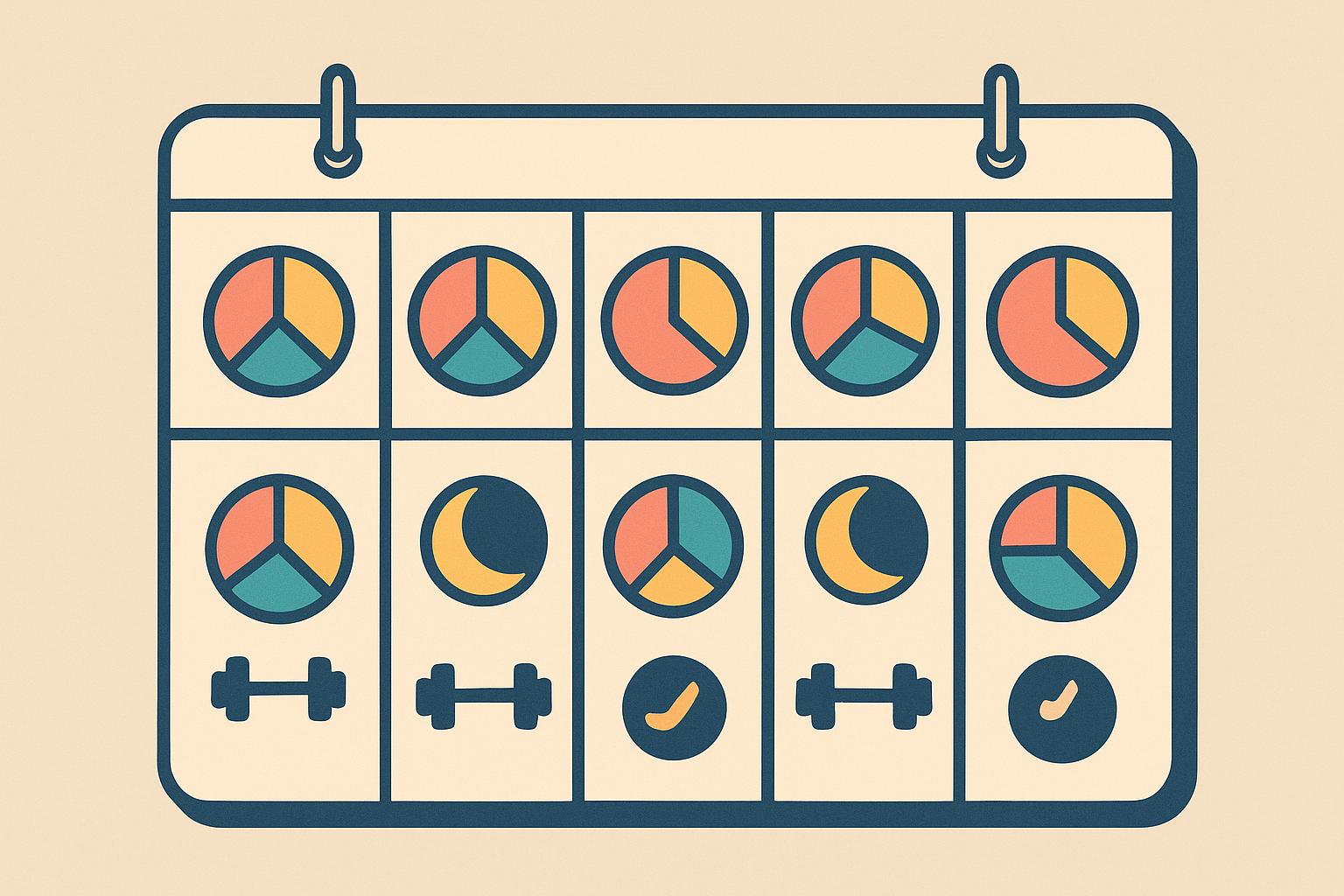
When to Eat for Maximum Muscle Growth
The whole “when to eat” thing used to stress me out. But it’s really not that complicated once you get the basics down. The distribution and timing of meals throughout the day creates distinct anabolic windows that can be leveraged for superior muscle building results. I’ve learned that when I eat matters just as much as what I eat, with specific timing strategies dramatically improving nutrient utilization and training performance.
Meal timing used to be something I barely considered. I’d eat when convenient and focus primarily on hitting my daily macro targets. Now I understand that the same nutrients consumed at different times can have vastly different effects on muscle protein synthesis, recovery, and body composition.
My bulking meal plan is now structured around these optimal timing windows rather than convenience or hunger cues. This approach requires more planning but delivers significantly better results in terms of muscle gain and minimal fat accumulation.
Pre-Training Nutrition Windows
Strategic nutrient timing 1-3 hours before training can dramatically impact performance, recovery, and subsequent muscle protein synthesis rates. The pre-workout period offers unique opportunities to prime the body for optimal training adaptations.
The pre-training window is where I can set up my entire workout for success. Proper nutrient timing during this period affects everything from energy levels and focus to post-workout recovery and muscle protein synthesis rates.
I’ve experimented with different pre-workout nutrition strategies over the years, and the impact on training quality is undeniable. The right nutrients at the right time can transform an average workout into an exceptional one, while poor timing can sabotage even the best training program.
Strategic Glycogen Loading
Consuming 30-50g of easily digestible carbohydrates 60-90 minutes before training optimizes muscle glycogen without causing digestive distress during exercise. This timing provides sustained energy while avoiding the blood sugar crashes that can derail training sessions.
This approach to pre-workout carbohydrate timing has revolutionized my training sessions during lean bulk phases. I have consistent energy throughout my workouts without the digestive issues that come from eating too close to training time.
The key is choosing carbohydrates that digest quickly but provide sustained energy release. I typically use a combination of dates and banana, which provides both quick glucose and sustained fructose for optimal energy availability throughout my training session.
Post-Training Recovery Cascades
The post-workout period creates multiple overlapping recovery windows, each requiring specific nutritional interventions for optimal adaptation. Understanding these phases allows me to maximize muscle protein synthesis and minimize recovery time between sessions.
Post-workout nutrition is where most people focus their attention, but many miss the nuanced timing requirements of different recovery phases. The immediate post-workout period has different nutritional needs than the extended recovery phase that follows.
My lean bulk success has improved dramatically since I started treating post-workout nutrition as a multi-phase process rather than a single meal or shake. Each phase serves a specific purpose in the recovery and adaptation process.
The Critical First 30 Minutes
The immediate post-training period requires rapid amino acid delivery combined with insulin-stimulating carbohydrates to maximize muscle protein synthesis initiation. This window offers the highest potential for nutrient uptake and anabolic signaling.
Studies show that 25 to 40 grams of protein per serving is the recommended amount per meal to maximize muscle protein synthesis following resistance training according to research published in Sports Medicine. This immediate window is where these recommendations become most critical.
I consume a whey protein shake with fast-digesting carbohydrates within 15 minutes of finishing my last set. This combination rapidly elevates amino acid levels in my bloodstream while stimulating insulin release to drive nutrients into muscle tissue.
Extended Recovery Optimization
The 2-6 hour post-training period benefits from sustained amino acid availability through slower-digesting proteins and anti-inflammatory compounds. This extended window supports continued muscle protein synthesis and tissue repair processes.
During this phase, I shift from fast-acting nutrients to more sustained options. Casein protein or whole food protein sources provide a steady stream of amino acids, while anti-inflammatory foods help manage exercise-induced inflammation without completely blocking the adaptive response.
This extended recovery phase is where I consume my largest whole food meal of the day during lean bulk phases. The combination of complete proteins, complex carbohydrates, and micronutrient-dense vegetables provides everything my body needs for optimal recovery and growth.
Daily Meal Distribution Patterns
The frequency and size of meals throughout the day impacts metabolic rate, nutrient absorption, and overall adherence to clean bulk protocols. I’ve experimented with different feeding patterns to find what works best for my lifestyle and training schedule.
For those following intermittent fasting protocols, understanding how to structure eating windows properly becomes crucial for muscle building success. The key is finding a pattern that supports your training demands while fitting into your daily routine.
My bulking meal plan has evolved significantly over the years as I’ve discovered what works best for my body and schedule. The pattern I use now maximizes nutrient utilization while maintaining high adherence rates throughout extended bulking phases.
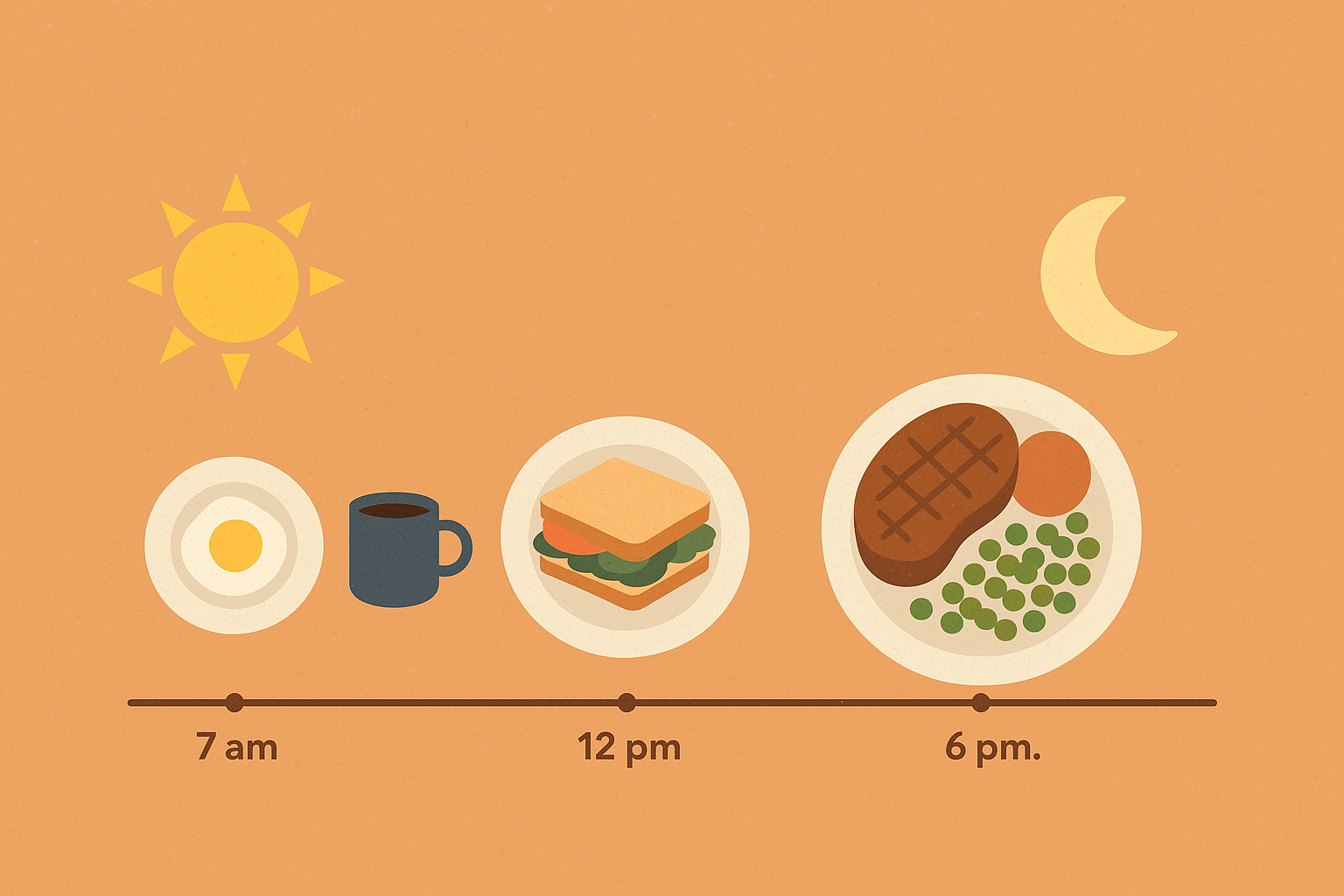
High-Frequency Feeding Benefits
Consuming 5-6 smaller meals provides consistent amino acid availability and prevents large insulin spikes that could promote fat storage. This approach maintains steady energy levels while supporting continuous muscle protein synthesis throughout the day.
Professional bodybuilder “Brett Wilkin demonstrates a structured 6000-calorie bulking approach with strategically timed meals” as reported by BarBend, showing how meal frequency and timing can support extreme muscle-building phases. Even at extreme calorie levels, timing and distribution matter.
The high-frequency approach works particularly well during aggressive lean bulking phases when total calorie intake is elevated. Spreading these calories across multiple meals prevents digestive overwhelm while maintaining stable blood sugar and energy levels.
Strategic Intermittent Feeding
Strategic fasting periods of 12-16 hours can enhance insulin sensitivity and growth hormone release when properly integrated with training schedules. This approach requires careful timing but can improve nutrient partitioning during feeding windows.
James implemented a 16:8 intermittent fasting protocol during his lean bulk, eating from 12 PM to 8 PM. He consumed his largest meal immediately post-workout at 2 PM, followed by a moderate dinner at 7 PM. Over 12 weeks, he gained 8 pounds of lean mass while his body fat percentage remained stable at 12%.
Research demonstrates that meal frequency is irrelevant for changing body composition as long as you account for calories and macronutrients according to Muscle & Fitness, allowing for flexible meal timing strategies. This gives you freedom to choose the pattern that best fits your lifestyle and preferences.
Daily Meal Timing Checklist:
- Pre-dawn protein consumed 30-45 minutes before normal wake time
- First carb window utilized 2-3 hours post-waking
- Pre-workout nutrition timed 60-90 minutes before training
- Post-workout meal consumed within 30 minutes of training
- Second carb window utilized 4-6 hours before bedtime
- Final meal includes tryptophan-rich foods for sleep optimization
- Mineral supplements separated by 2-3 hour intervals

How Organic Authority Can Transform Your Results
I’m not trying to sell you anything here, but quality does matter when you’re putting in this much effort. Implementing these advanced clean bulk strategies requires high-quality supplements and ingredients that meet strict purity and bioavailability standards. Organic Authority’s rigorous evaluation process ensures you’re getting products that actually deliver the results these protocols promise, without the guesswork of sorting through inferior options.
When selecting high-quality ingredients for your muscle-building goals, choosing the right collagen supplements can significantly impact your results and recovery. The quality difference between premium and standard supplements becomes crucial when you’re implementing precise timing and absorption strategies.
The marine-sourced collagen available through Organic Authority perfectly complements these timing strategies. Its superior bioavailability supports the increased connective tissue demands of progressive overload training while providing easily absorbed amino acids that enhance muscle protein synthesis. The neutral taste profile makes it ideal for adding to post-workout smoothies or morning coffee without disrupting your carefully planned flavor profiles.
Clean bulk meal plan success depends heavily on the quality of your ingredients and supplements. When you’re implementing advanced timing and absorption strategies, using inferior products can completely undermine your efforts. Organic Authority’s curation process eliminates the trial-and-error approach that wastes both time and money.
I’ve wasted money on cheap supplements that did nothing, and I’ve seen the difference when I invest in better ingredients. You don’t need to break the bank, but don’t sabotage your efforts with bottom-shelf stuff either.

Ready to transform your lean bulk results with science-backed nutrition timing? Explore Organic Authority’s curated selection of premium supplements designed to maximize bioavailability and support your muscle-building goals.
Final Thoughts
Here’s what I want you to take away from all this: you’re probably closer to your goals than you think. Maybe you just need to tweak your timing, manage your stress better, or pay attention to food quality. Clean bulk success isn’t just about eating more food – it’s about understanding how your body processes nutrients at different times and under different conditions. I’ve learned that successful muscle building requires working with your natural biology rather than against it.
I’ve made every mistake you can think of. I’ve obsessed over meal timing to the point where I was setting alarms every two hours. I’ve ignored stress and wondered why my progress stalled. I’ve bought into every supplement marketing claim out there. The strategies I’m sharing now are what actually survived all that trial and error.
Look, I know this might seem like a lot. When I first learned about all this stuff, I felt overwhelmed too. The good news? You don’t need to do everything perfectly right away. Pick one thing that makes sense to you and try it for a few weeks. What matters most is consistency and patience. These advanced techniques can dramatically improve your results, but they still require time and dedication to see the full benefits.
Lean
Lean bulking becomes much more effective when you understand the underlying mechanisms that control nutrient partitioning and muscle protein synthesis. The extra effort required to implement these strategies pays dividends in terms of better body composition, improved performance, and faster progress toward your goals.
Small changes can lead to big results when you understand what your body actually needs. And remember – this is supposed to enhance your life, not take it over. Your body will thank you for taking this more thoughtful approach to nutrition and muscle building.


